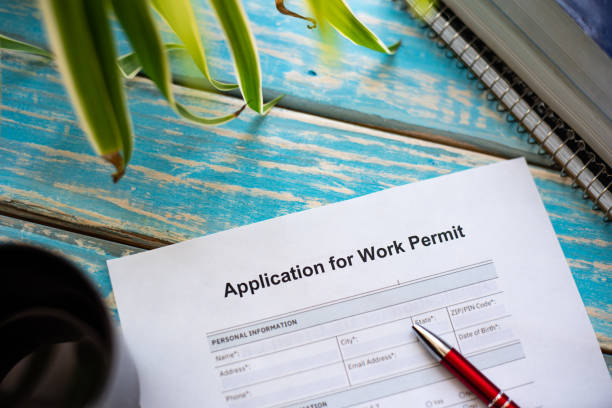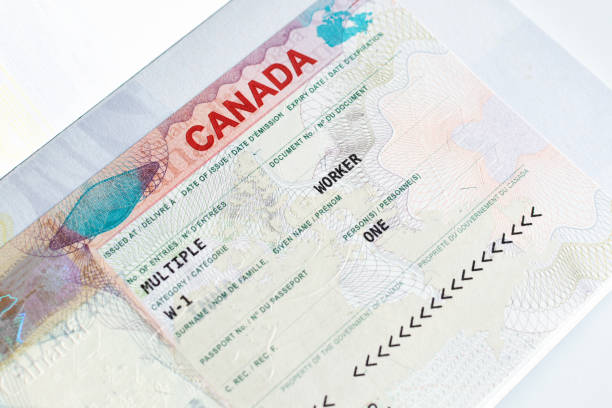Employers in Canada can temporarily fill labor shortages by hiring foreign nationals under the Temporary Foreign Worker Program (TFWP).
The TFWP is jointly run by Employment and Social Development Canada (ESDC) and Immigration, Refugees and Citizenship Canada (IRCC). One prominent feature of the TFWP is the requirement for a Labor Market Impact Assessment (LMIA).
Suppose a business wants to hire a foreign national through the temporary foreign worker program; it must get an LMIA proving it could not find a permanent resident or Canadian citizen to fill the post.
An employer can only formally hire a foreign national—who can then apply for a Canadian work permit or permanent residence—after acquiring a positive LMIA.
In addition, employers can hire workers without obtaining an LMIA using alternative temporary worker options. These options are arranged under the International Mobility Program and are intended to handle applications for work permits exempt from the LMIA.
What is the Temporary Foreign Worker Program
The Canadian government established the Temporary Foreign Worker Program to facilitate opportunities for foreign workers wishing to work temporarily in Canada.
With the potential for extensions, the TFWP only permits individuals to work in the country for a maximum of six months! During this time, foreign employees are granted a work permit and visa and are only allowed to work for one employer.
They are required to follow Canadian laws and are allowed to reside in the area of Canada where they work.
When their work permit and visa expire, the worker has two options: they can ask for an extension of their permit, or they can leave Canada and return to their home country.
What are the Prerequisites for the Temporary Foreign Worker Program?
There are strict standards to become a temporary foreign worker in Canada. The Canadian government demands evidence that a Canadian company requires a foreign worker to safeguard the employment of its citizens and permanent residents.
Thus, the most crucial prerequisite is having a labor market impact assessment. Employers in Canada are required to obtain the LMIA from the government.
It attests to the employer’s efforts to locate a citizen or permanent resident of Canada for the employment position. Nevertheless, nobody was qualified, willing, or able to work that job.
The employer needs a foreign worker since no one in Canada was deemed qualified for that position. The LMIA takes a few months to obtain.
Therefore, the process must start as soon as possible. Other requirements to qualify for the TFWP are listed below. You must:
- Possess a job offer in Canada.
- Demonstrate that you will exit Canada after your work permit expires.
- Show evidence that you can financially support your stay and your family’s stay in Canada and have enough funds to return to your home country.
- Demonstrate that you have a clean criminal record.
- Prove that you are not a threat to the national security of Canada.
- Be in good physical and mental health.
- Demonstrate that you will not work for an employer that offers striptease, erotic dance, erotic massage, or escort services.
How to Apply for the Temporary Foreign Worker Program

Secure a Job Offer
The requirement for all Canadian work visas is that the candidate must apply for a work permit only after receiving a job offer from a Canadian employer.
Consequently, if you have chosen to work there, you must begin looking as soon as possible. You can also use the Canadian government’s job bank or other job portals to search for a job online.
After this phase, you must have received a legitimate job offer letter from a Canadian business.
Obtain the LMIA
Employment and Social Development Canada (ESDC), where they will evaluate the impact of recruiting a foreign worker on the Canadian labor market, is where your employer must apply for the LMIA.
You can proceed to the next phase if your employer’s request for an LMIA is granted; if not, they will need to reapply or you will need to find another work.
Apply for Your Work Visa and Permit
After you obtain the LMIA, you can properly apply for the work visa and permit. You must apply to the Canadian Consulate online through their website or in person at the Consulate office in your country.
Your application must include these forms:
IMM 1295 – Application for Work Permit Made Outside of Canada
Schedule 1 – Application for Temporary Resident Visa
IMM 5645 – Family Information Form
IMM 5409 – Statutory Declaration of Common-Law Union (if applicable)
IMM 5476 – Use of Representative Form (if applicable)
IMM 5475 – Authority to Release Personal Information to a Designated Individual (if applicable)
Supporting Documents
- The validity of your passport must extend beyond six months from the day you intend to enter Canada.
- A duplicate of every page of your passport.
- Two passport photographs by the specifications
- A genuine employment offer from your company.
- Evidence of your immigration status (if your citizenship and place of residence differ).
- Certifications from police records.
- Your curriculum vitae.
- Your academic transcripts.
- A duplicate of your marriage license, if any.
- A copy of the birth certificates for the children, if any.
- A Certificate d’acceptation du Quebec (CAQ) is required if you plan to operate in Quebec.
- Any other documentation requested by the Canadian Consulate.
Complete the Medical Examination
It is best to have a medical examination to prove your sound health. Once you’ve had the required testing, you can do this at any licensed physician who can sign the proper paperwork.
You are only permitted to work in child care, primary or secondary education, the health service, or agriculture if you have a medical checkup.
You should finish the medical exams to limit the number of jobs you can choose from.
Attend Your Visa Interview
If your work permit expires, the Canadian Consulate officials may like to speak with you to confirm that you have been truthful in your application and will return to your home country.
You must attend the interview at the scheduled time and respond to any questions.
After the interview, they may also ask for your biometric data, which you must provide.
Wait for Processing
After providing the required documentation, you must wait for the Consulate to process the application. Depending on the country, processing times vary, but you may expect to hear back about your status anywhere from 3 – 27 weeks.
The Consulate will either approve or deny your application. If they approve it, you will receive further information; if it is rejected, the reasons for rejection will be sent.
When you reapply, you can consider their suggestions and improve your application.
Travel to Canada
The final step is to travel to Canada. You can make travel and accommodation arrangements, and when you land in Canada, the Port of Entry (PoE) officers will stop you for checking.
They will check your documents and ask questions about the purpose of your visit and how long you will be in Canada.
Give them all your documents and answer all the questions. They cannot let you into the country if they suspect you are not being truthful.
Frequently Asked Questions
What are the required fees for Canada’s temporary work permit?
The Temporary Foreign Worker Program requires an initial $155 application fee to be applied for.
You must pay this cost each time you use it, even if you request an extension, as the Consulate requires it to process your application.
If you are requested to provide biometric information, you will additionally be required to pay a fee of $85.
How long is the temporary work permit valid?
The initial temporary work permit is valid for 6 months or less; however, the Government of Canada has allowed holders to file for extensions. To file for an extension, you must collect the documents again and apply from inside Canada.
The extension is up to the Canadian Government, but generally, the maximum time you can stay in Canada through the TFW program is 4 years. After that, you will have to return to your home country.
Can I bring my dependents to Canada while on the Temporary Foreign Worker Program?
The work permit holder is permitted to bring their immediate family and dependents into Canada under the terms of the TFWP. This covers your cohabiting partner or spouse as well as any young children.
You should submit the documents for your family with your TFWP application so the Consulate can process them all simultaneously.
Though your dependents are permitted to travel with you, it is up to the Canadian government to grant your spouse or common-law partner permission to obtain a work permit and secure employment in Canada.
It would be best to contact the Consulate for additional information, as their rulings are case- and country-specific.
